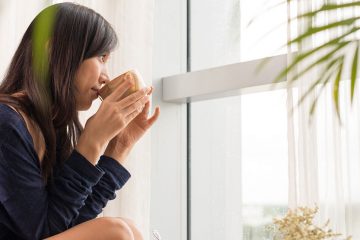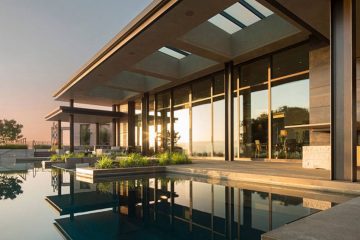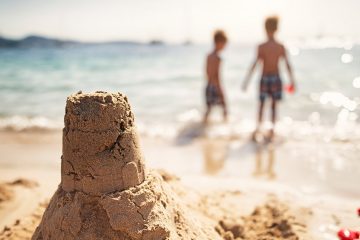How to Partake in Sustainable Tourism on Your Travels
Small Things Can Make a Difference
You see the words everywhere these days: sustainable tourism. What does it mean? I believe sustainable tourism supports the environmental, cultural, and economic elements of a destination and its citizens. Sustainable tourism enriches the lives of visitors who take only photos, while leaving behind footprints, and maybe a little money.
When I researched the term “sustainable tourism,” much of what I found was related to emerging tourist destinations. Air pollution, water and fuel shortages, habitat destruction, and low-wage service jobs are damaging environments and cultures in places like Namibia, Montenegro and Burma as a result of their burgeoning tourism industries.
The Mendocino Coast
After reading about the challenges these places faced adapting to a tourist economy, I realized I lived in an emerging tourist destination — the remote, wild and fragile Mendocino Coast in Northern California. Visitors to the area are increasing annually.
Bountiful forest and fish-filled waters spawned 1800s frontier towns. They were prosperous hubs for logging and fishing. People from around the globe came to make their fortunes, start a new life or disappear into the boom town clamor.
Timber and fish resources were harvested to the point of near extinction. Both industries faded away. Mills, canneries and fishing fleets disappeared. By the turn of the 21st century, most coastal townships were gone or reduced to micro-sized spots along Hwy 1. No industry and few trades were left. Tourism was the next solution to economic prosperity.
As Main Street traffic slowed with out-of-town traffic, and “no vacancy” signs appeared, I rejoiced. The community would recover. Economic stimulus was at hand. As services and activities for visitors developed, my community made some mistakes, but we have also fostered sustainable winners.
Here are a few stories of seemingly small actions and practices that promote sustainable tourism and life in my hometown.
Stanford Inn
Billed as an Eco-Resort and locally owned and operated, Stanford Inn is genuinely sustainable in every aspect of their lodging, restaurant, and hiking, biking and canoeing equipment rental. The vegan restaurant is supplied by the enormous organic kitchen garden and regional farms. Canoes are handmade by a local artisan, using reclaimed redwood from old buildings.
Their slogan, “The Inn manifests our commitment to live mindfully so that all might live well,” is evident everywhere when you explore the river and oceanfront property.
Casari Sheep Ranch
The Casari Sheep Ranch offers ranch-stays in a vintage farmhouse and camping in a grove of ancient cypress. An onsite wool mill and Wool Festival give visitors a chance to learn how wool is sheared, processed and spun. Ranch tours show how organically raised animals prosper in natural family groups that include lambs, ewes and rams.
The income from these tourist activities offsets the cost of raising a flock of Navajo Churro sheep, an American breed near extinction.
The FV Princess
The FV Princess brings her catch back to home-port for local consumers, restaurants and markets. Many of the small, local fishing vessels sell their catch to seafood wholesalers. When the fish leave the area, locals lose access to fresh seafood. The Princess’ Captain has made a firm commitment to keep it local by selling off the boat and at farmers’ markets.
Skunk Train
In the days before roads and trucks could do the job, the Redwood Route was king. The 131-year-old Skunk Train made it possible to move gigantic redwoods from remote mountain forests to lumber mills in coastal and inland towns.
Today the train is classified as a historical excursion route. The Skunk Train departs daily, rain or shine, passengers or not. The crew is paid union wages and benefits despite having long been a tourist attraction.
The Wild Flower Motel
The Wild Flower Motel had been closed for years until two brave souls bought the property and committed two years and piles of money to its restoration as a functioning community member.
They used fallen cypress trees to make free-edge headboards. The wood was gathered from trees toppled by a record-setting wind storm.
The old, weathered siding was removed from the motel exterior, planed and reinstalled as ceilings in the guest rooms. The reopened motel has turned a blight into community pride and provides much-needed lodging for visitors.
How to Get Involved in Sustainable Tourism
Here are a few simple suggestions for practicing sustainable tourism whether at home or on the other side of the globe.
Environment
- Limit your use of fossil fuel and become a more eco-conscious traveler. Take public transit, peddle, paddle and walk.
- Protect plants and habitats. Stay on designated trails and paths.
- Conserve water and power.
- Recycle, repurpose, reuse everything.
- Bring your own shopping bags.
- Take only photos and memories, leave only footprints.
If you are on vacation, why wake up early? Although it might be difficult to get up, travelers who rise early can take advantage of these many benefits!
Culture
- Visit museums and galleries.
- Buy mementos from regional artisans.
- Hire a tour guide or tour operator based in your destination.
- Immerse yourself in home-grown culture. Search out entertainment in local venues such as theaters, community halls, schools and churches.
Economy
- Go local, go local, go local.
- Choose locally owned and operated lodging over corporate chains.
- Select locally owned, operated and staffed eateries, serving food from the region.
- Buy direct. Shop at farmers’ markets, street and art fairs.
- Skip the big box supermarket in favor of mom and pop shops selling locally sourced food.
- Buy locally made wine, beer and spirits. For a fuller experience, take a brewery tour.
- Pass up factory-made food in favor of regionally grown, harvested and processed.
Finding businesses that are working toward sustainability requires a bit of research, which you can do beforehand or when you arrive. My favorite is to ask a local once I have boots on the ground.
No matter where you travel or how you arrive, once at your destination, small things can make a difference to sustaining a community’s environment, culture and economy.








